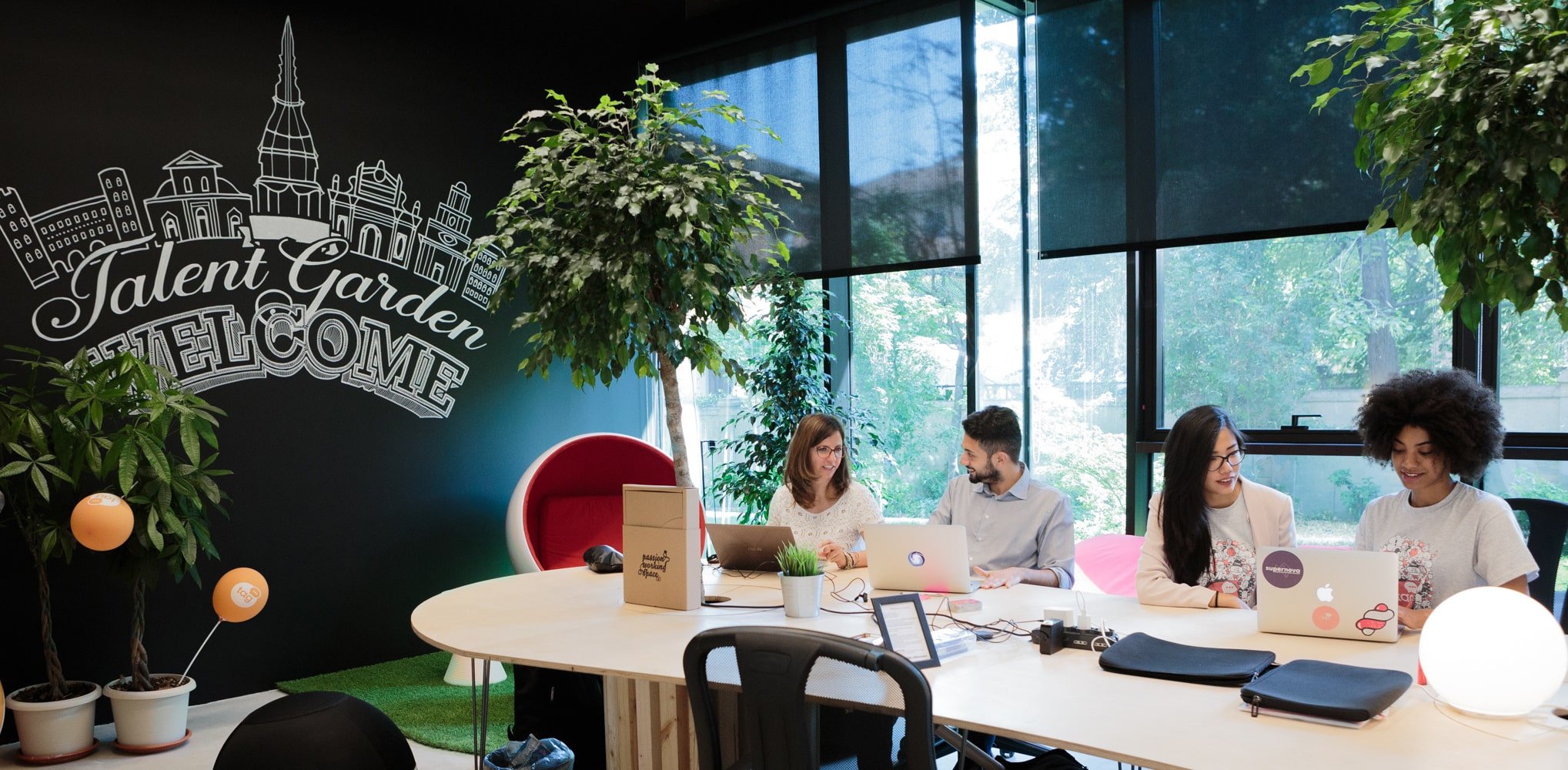

Don't you want to read? Try listening to the article in audio mode 🎧
In this article, we will see in detail the key functions and specific tasks of Human Resources (HR) within a company, with particular attention to the changes and innovations that technology, and increasingly simplified access to large amounts of data, are also bringing in one of the most institutional areas of the company organization, precisely Human Resources. But before we dive into specifics, let’s identify the topic, starting from what the company functions and organizational activities are, then we will focus on the functional area of human resources, and then deepen the areas of intervention and the impact that technology and innovation can give to Human Resources, both in terms of professional figures and in the field of Change Management and Digital Transformation.
Business functions and organizational activities
A corporate function can be defined as the set of organizational activities with similar or interrelated characteristics, which pursue specific objectives. Instead, Organizational Activities can be divided into two macro-areas:- Managerial Area, which includes all functions necessary to identify the company goals, roles and planning;
- Executive Area, which has the task of defining and implementing all the processes necessary for the realization of the activities themselves.
The HR Function
The HR Functional area fully manages human resources in the company. Or rather, the human capital, what the company owns, in terms of professionalism and expertize of its employees. Let’s see in more detail what are the main intervention areas of HR in the company’s human capital management.Human Resources in a company and intervention areas
Within the HR Function, there are several areas of intervention that allow to work, giving the utmost value to the company’s human capital, and always bearing in mind the business of the same. These areas can be identified in:- Recruiting: intervention area dedicated to researching and acquiring the human resources necessary for the company’s business;
- Operation: the administrative section which deals with personnel management from a bureaucratic point of view;
- Learning & Development: this section is attentive to the growth of resources and the improvement of skills based on the needs of the company;
- Legal: the section that is responsible for the employment law side of relations with human resources, either by internalizing it (especially in large or corporate companies) or more often by collaborating with external partners;
- Organization and Change: the intervention area that deals with organizing and structuring the company, adapting it to the needs of the business, developing and updating internal processes in the dual perspective of effectiveness and efficiency.
Innovation and human resources
Today, we all have to deal with the change prompted by technological innovation, even business organizations, including the most well-consolidated and traditional one. Also for Human Resources, a key function in the company, we need a change, in order to adapt to the latest technological trends. It is certain that automation processes help Human Resources to focus on these changes, but the real test is the digitization of the HR department, starting with the inclusion of more tech profiles with a strong digital mindset. We are referring to key figures who can innovate not only the approach to problems but, also the solutions adopted, thus allowing the achievement of much higher function’s performance, but above all, an adaptation to the needs arising from the technology transformation that companies face every day. The role of Digital HR in the company becomes a guide in change paths linked to digital transformation and it consciously encourages leadership styles suitable for contemporary complexity. This figure can be part of HR department classic areas with several innovative cuts. Let’s see some examples:- Innovator & Change Maker: a figure who, thanks to his digital mindset, knows how to explore the principles of Digital Transformation and finds ways and methods to apply them to business processes by, first and foremost, identifying which areas require innovation, and finding resources to drive change.
- UX Designer: a professional able to apply the principles of the UX approach to Human Resources. As we know, one of the fundamental principles of UX design is the understanding of Users’ needs, through the study of the way of interacting and the critical points, with the aim of identifying a customized solution for each type of User. By applying this method to HR, both for employees and during the selection of candidates, we can witness a paradigm shift, in which Human Resources are the focus of a continuous analysis and innovation process, based on past experiences.
- Data Analyst: the professional of data analysis. In recent years, the role of HR Analytics has become increasingly common. We refer to a professionalism who applies techniques for collecting and analyzing data coming from human resources, with the aim of increasing performance, improving working conditions, or even reducing the turn-over, by anticipating needs and analyzing the time series, department by department. HR Analytics, also known as People Analytics, makes the organization capable of adopting a data driven approach in various areas: from context analysis to strategic decisions.
- Marketing & Communication Specialist: a key figure, with solid and in-depth communication and marketing skills, capable of transmitting clear messages and values to the targets and engaging them in various initiatives, whether they are in-house activities or recruitment processes, also through digital marketing tools such as social media.
- Agile Leader: a professionalism able to apply and spread agile methodologies to renew organizational structures and working methods, both by changing the point of view, integrating it with systems, data and analysis that were unavailable before, and by applying typical working methods of the most productive environments, such as Lean Management, also through the use of methodologies such as Scrum and Organization Design.
Why it is important to define the types of business functions
Through the identification and an adequate preparation of the types of business functions, it will be possible to divide the areas of competence in a homogeneous way, also with the advantage of developing greater specialization for the company's human capital. Furthermore, the efficiency of the individual sectors is also improved. And this precisely because the identification of the functions allows you to indicate the skills of each department, avoiding conflicts and interference that can delay goals achievement. The organization of business functions also allows for better management of company resources, helping to limit waste and increase productivity. In particular, still referring to what has been said so far as regards HR function, this role has changed drastically, in a particular way in the latest years. Often in modern times, many companies’ HR teams, including medium-large sized ones, limit their function to the management of operational activities, without considering the fundamental role that digital HR has and will increasingly have in business contexts. The digitization of HR teams represents an evolution towards a strategic resource that helps ensure the success of the business.Conclusions
Within a company organization, the key functions are all those which, according to the market and the company business, are of vital importance, in order to obtain an efficient and effective company, allowing not only its survival but also its evolution, adapting to external changes while remaining competitive and possibly obtaining its own market niche. In particular, the HR function is one of those areas that are always, and in any case, essential, since the human capital is the greatest value of a company, and if chosen, managed and developed in the right way (considering not only the business and the company’s needs, but also the target market demands), the success of the organization is guaranteed. Everything starts and is guided by human resources that work there. Nowadays, Digital HR can really make a difference, adding an extra gear to the strategically key work that has always been carried out by the HR function, essential for evolving in the modern context.
Article updated on: 09 August 2023

Don't Waste Your Talent. Turn It Into a Career With a Course That Fits Your Needs!
Talent Garden is your Digital Skills Academy, offering courses in Digital Marketing, UX Design, Digital HR and Data Analysis designed to launch your career.
Keep reading

3
min read
5 Reasons Why Tech Startups Should Choose a Coworking Space in Madrid
The value of meeting others and networking with like-minded humans is a huge perk when it comes to coworking. Finding a ...
Talent Garden
04/04/2019

3
min read
Open Innovation Challenge for the future of agri-tech
The evolution of agriculture 4.0, more commonly called Smart Farming, is similar to what is happening with Industry ...
Talent Garden
17/07/2019

5
min read
The Definitive Guide to Digital Product Management
With the fast advancements in digital technology, we are all facing rapid change from our personal lives but also in ...
Talent Garden
18/09/2020

17
min read
The complete guide to Customer Relationship Management Software (CRM)
CRM (Customer Relationship Management software) was created in the 1980s as a simple database of customer information. ...
Talent Garden
11/03/2019
